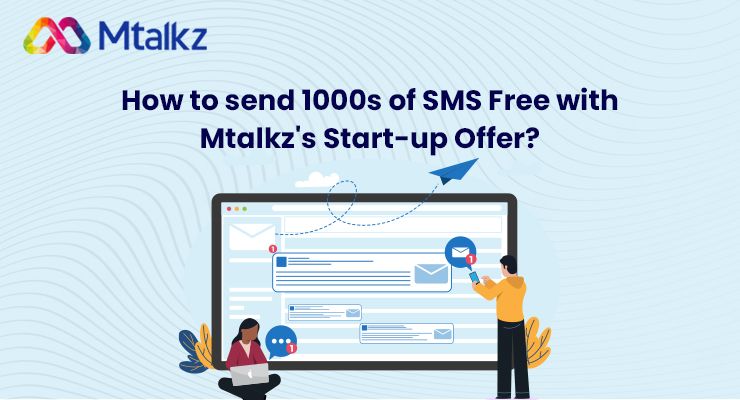
How to Send Bulk Emails That Actually Reach Your Subscribers
Shelly Prakash
•Sending bulk emails can be one of the best ways to grow your business, but if your emails end up in the spam folder, it’s a waste of effort, money, and time. Studies show that around 17% of emails never reach the inbox—that’s almost 1 in 5 messages gone before anyone even sees them!
The good news? You don’t have to fight with spam filters forever. With the right approach, you can send bulk emails that reach your audience, get opened, and even drive action. In this guide, I’ll Walk you through exactly how to do it.
By the end, you’ll know:
- Why your bulk emails might land in spam
- How to build and maintain a healthy email list
- How to create emails that get opened
- Ways to protect your sender reputation and stay in the inbox
Let’s dive in.
Why Your Bulk Emails End Up in Spam
Before you can fix it, you need to understand why emails go to spam. Here are the most common reasons:
- People don’t recognize you – If you're “From” name doesn’t match your brand or past interactions, your subscribers might flag your emails as spam.
- Spammy content – Email providers scan for certain words, too many exclamation marks, and misleading subject lines. Phrases like “Get Rich Fast” or “Urgent!!!” are huge red flags.
- You’re breaking the rules – Laws like CAN-SPAM and GDPR exist to protect inboxes. Not following them can send your emails straight to spam.
- Your reputation is low – If your emails bounce often, get unsubscribed from, or are reported as spam, your sender score drops.
- Missing authentication – If you haven’t set up SPF, DKIM, and DMARC records for your domain, Gmail and others might mark your emails as suspicious.
- You’re sending too fast – Sending thousands of emails from a new IP or domain without “warming up” signals spam filters.
- Old or unengaged contacts – Emails sent to unverified or inactive addresses can trigger spam traps.
How to Send Bulk Emails Without Spamming
I’ll be honest: there’s no magic button here. Email marketing takes patience, care, and consistency. But if you stick to the basics, your results will improve dramatically.
1. Build and Maintain a Healthy Email List
Your email list is everything. If your contacts didn’t give permission, or if their info is outdated, you’re starting on the wrong foot.
Here’s how to do it right:
- Build your own list – Don’t buy lists or scrape emails. People flag emails from purchased lists as spam, and it kills your deliverability. Instead, offer lead magnets, templates, free trials, or guides to encourage people to sign up.
- Double opt-in – Ask subscribers to confirm their email address. It ensures your list is full of people who actually want to hear from you, reduces bounces, and keeps you compliant with laws.
- Segment your audience – Not everyone wants the same thing. Divide your list by interests, past purchases, engagement, or location, and send emails that feel personal and relevant.
- Clean your list regularly – Remove inactive or invalid emails. This improves your engagement rates and protects your reputation.
2. Craft Emails That Get Delivered (and read)
Even with a clean list, your content matters. You need to pass both technical checks (spam filters) and human checks (your subscribers deciding whether to open it).
Tips for writing better emails:
- Write clear, honest subject lines – Keep it short, specific, and curiosity-sparking. Avoid spammy phrases like “FREE!!!” or “Act Now!!!”
- Avoid spam trigger words – Words like “guaranteed,” “winner,” or “risk-free” are red flags. Keep your language natural and conversational.
- Personalize – Use the subscriber’s name, location, or past activity. It makes your emails feel personal, not generic.
- Optimize design – Keep a clean layout, use plain text with some images, and test for mobile devices. Don’t overload with links or attachments.
- Include an unsubscribe link – Always. It’s required by law and protects your reputation.
3. Protect Your Sender Reputation
Think of your email reputation like a credit score—it determines whether your emails reach the inbox.
- Use a recognizable “From” name – People should instantly know who’s emailing them.
- Authenticate your domain – SPF, DKIM, and DMARC verify that emails really come from you.
- Consider a dedicated IP – If you send thousands of emails, a dedicated IP prevents other senders from affecting your reputation.
- Warm up your domain – Don’t blast thousands of emails from a new domain. Start small and gradually increase.
- Be consistent – Regular campaigns are better than sudden bursts followed by silence.
4. Test and Monitor Everything
Even the best plans need checking.
- Run spam tests – Send emails to different providers (Gmail, Outlook, Yahoo) and devices before sending to your full list.
- Check links and images – Broken links or slow-loading images hurt user experience.
- Track key metrics – Open rates, click-through rates, bounce rates, and spam complaints tell you what’s working and what isn’t.
Final Thoughts: Send Emails People Actually Read
The secret to email marketing isn’t tricks. It’s building trust, delivering value, and treating your subscribers right.
Here’s a simple checklist to follow:
- Send emails people want, not just promotions
- Be consistent with timing and frequency
- Keep your list clean and engaged
- Personalize and segment your content
- Track and optimize every campaign
If you do this, you’ll not only reach the inbox—you’ll earn your subscribers’ attention and loyalty. And that’s where the real results happen.